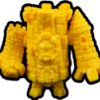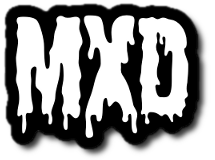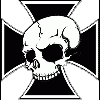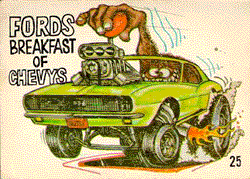Cool!
Might we assume MUSCLEs were created via the same method? If so,
this thread can now be approached differently.
Interestingly, Part 26 consists of 15 figures. Thus, if we assume all Kin/MUSCLE molds consisted of 8 sculpts, then this creates somewhat of a problem as there aren't 16 figures in Part 26.
Perhaps one figure from Part 27 was simply included with the 7 remaining figures from Part 26...
Alright, I'm already getting carried away... but wait!
If MUSCLEs were produced in molds consisting of 8 sculpts, what might this mean for our theories about which figures were or weren't produced in certain colors? It means that figures not found in particular colors should be in groups of eight!

Look at
Archive One of the MCIA. There is an eight figure gap in the Salmon and an eight figure gap in the Magenta. Unfortunately, this does not hold true throughout each archive...
However, I've always assumed the MUSCLEs were made using the original Kinnikuman molds. This means, then, that the 8-figure gaps should come according to Kinnikuman part -- not the MUSCLE numbering system.
So, my next task is to go through each MUSCLE and identify its Kinnikuman part and search for colored patterns that way.
Basically, what we should find is groups of 8 figures from various Kinnikuman parts not found in certain colors.
I know I have talked about a possible Kinnikuman Part/Colored MUSCLE connection before, but with Arforbes current find, we now know that Kin/MUSCLEs were molded in groups!
And then there is this pattern that Veers has found:
It seems that the figures break into four categories. The figures were either produced in eight colors, seven colors, six colors, or five colors. I have had a difficult time trying to make a graphic representation of the numbers and colors.
Link
How might molds consisting of 8 sculpts factor into the above pattern, 233 figures, and eight colors?























